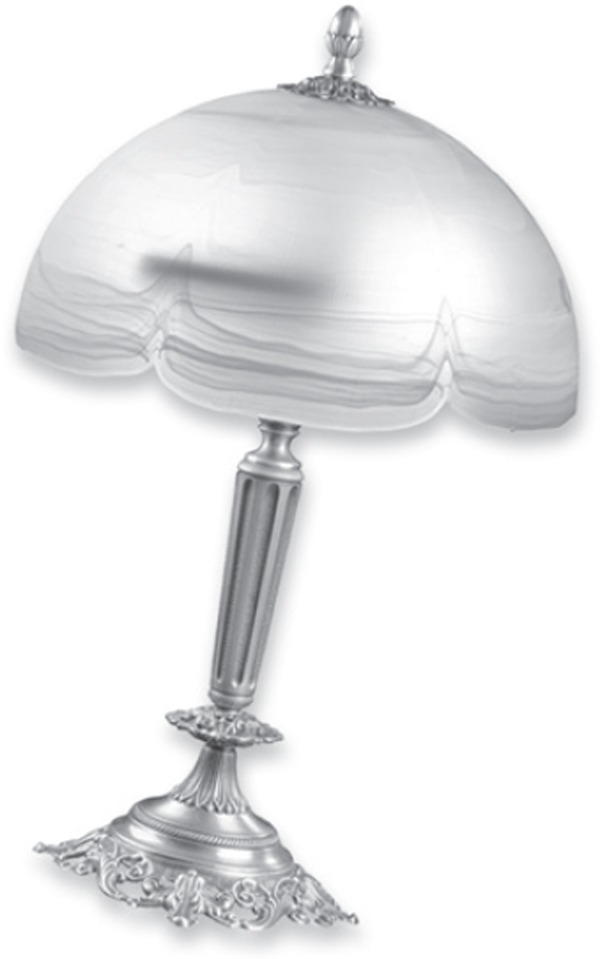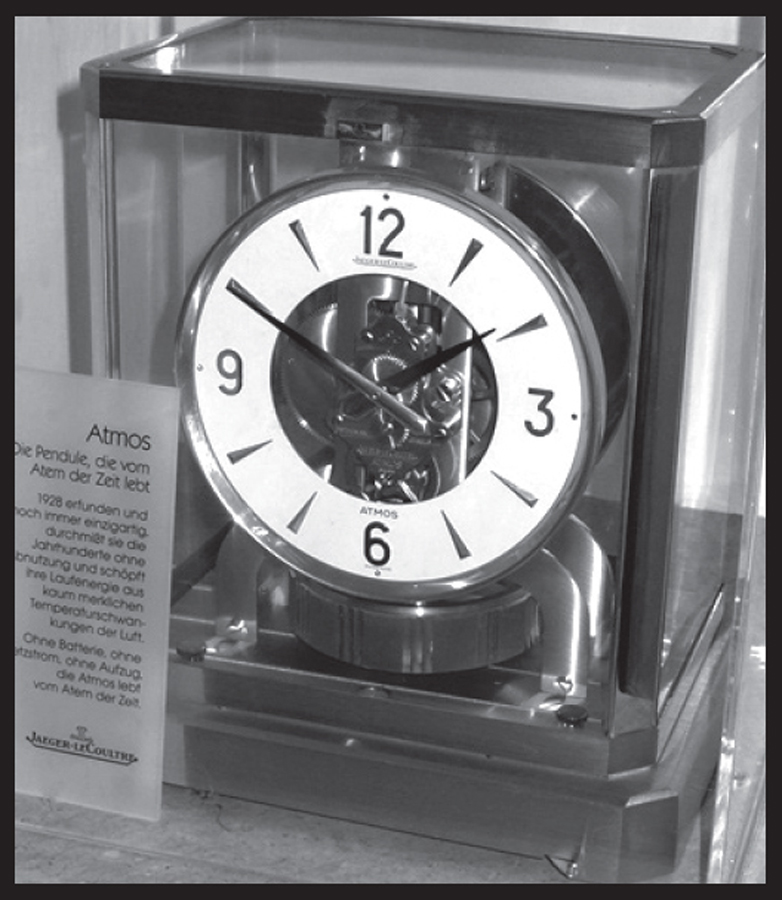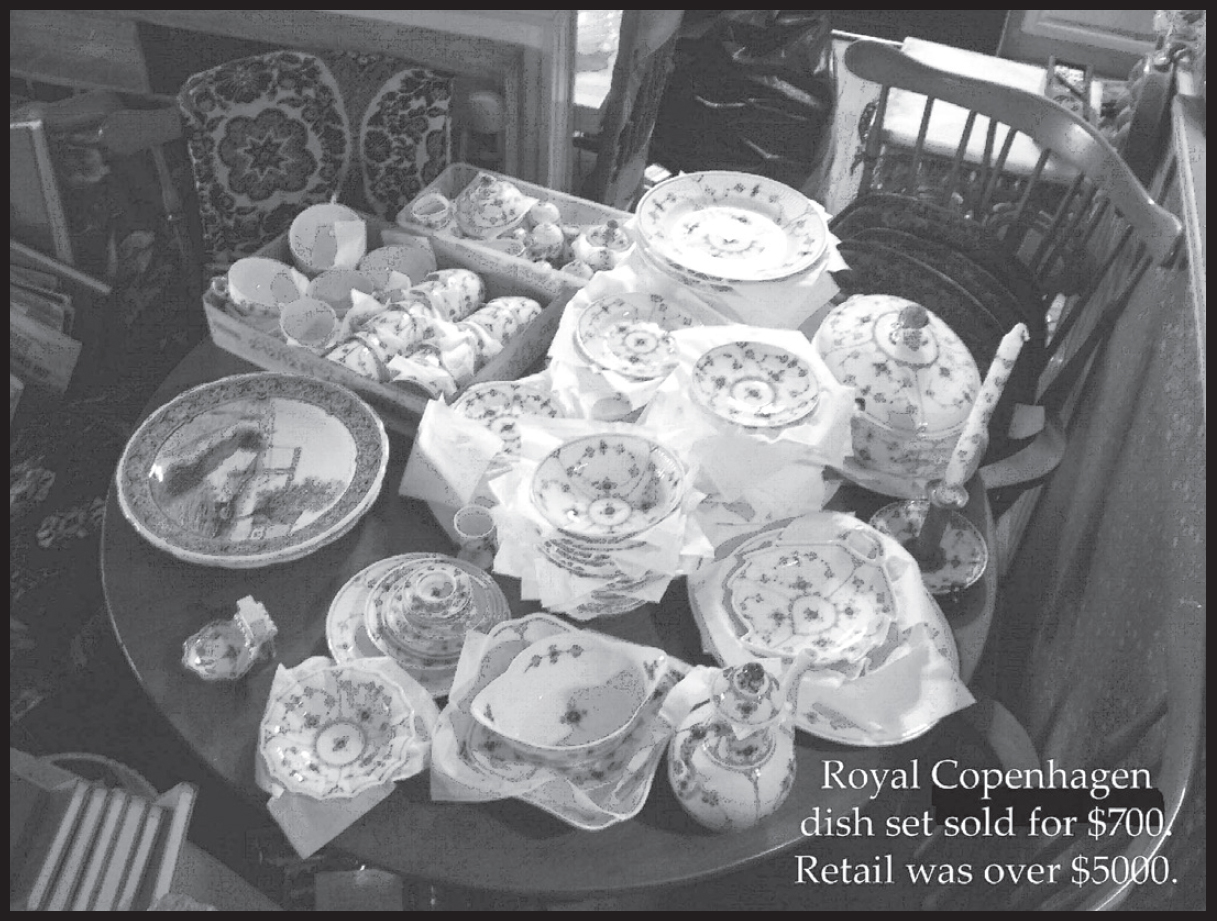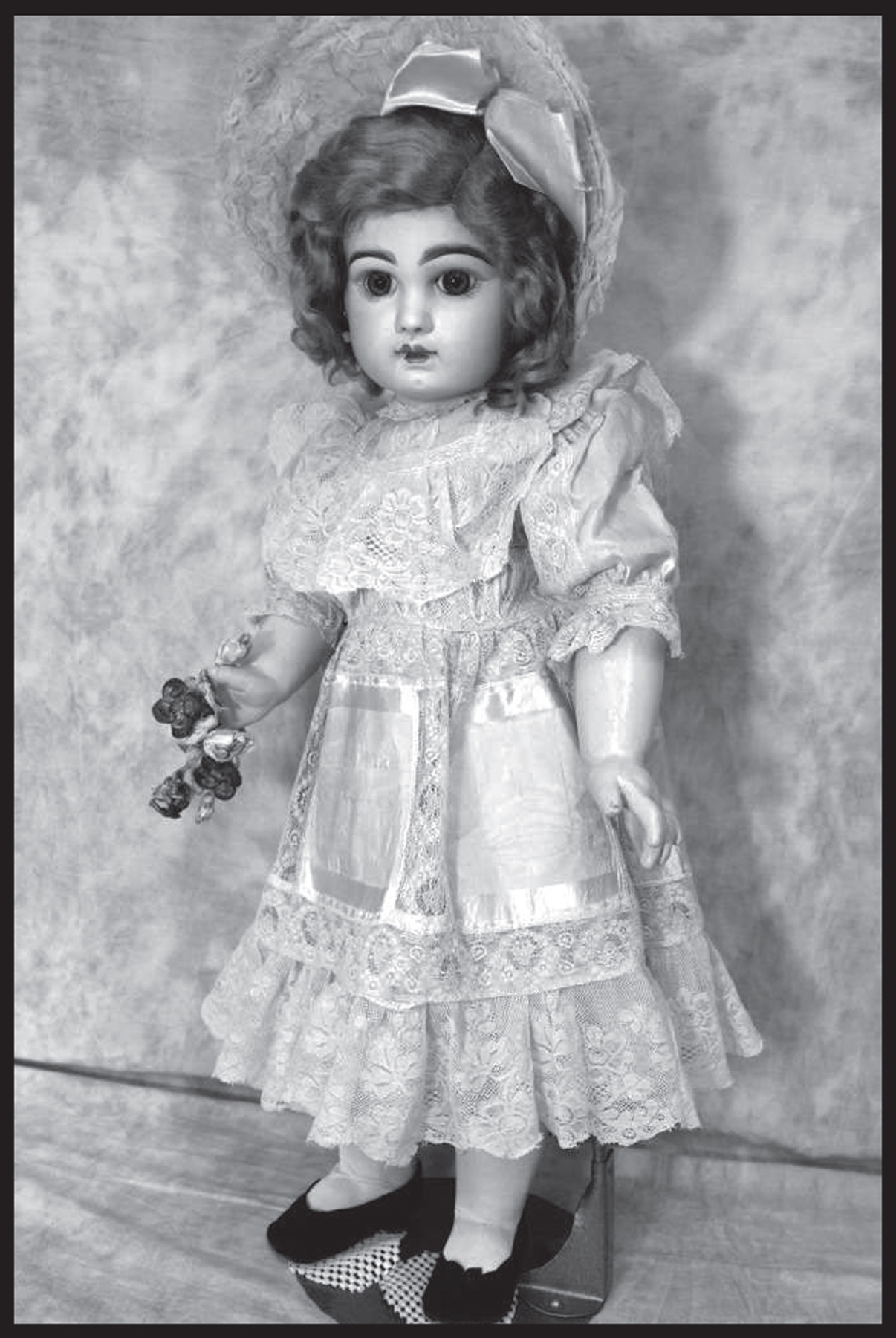
During your business adventure, you’ll come across literally hundreds of thousands of items you must research because they are out of the ordinary, needing current pricing for each. I’ll share a few items that were out of the ordinary for me to give you an idea of what I’m talking about. Make sure to check online for current pricing when reading this guide. You’ll be amazed at the fluctuation from month to month and year to year. Plus, once you begin, pay close attention to furniture purchase pricing. Antiques when I began in 1990 were off-the-wall high and now, at time of print, they’ve gone down 75 percent! Contemporary sleek lines are sought after by customers who are now feathering their nests. All or most baby boomers searched for Victorian solid wood furniture, but currently younger buyers want more modern and less expensive furniture. Of course, if the younger ones grew up learning about fine furniture as mine, they would seek finer pieces, either modern or vintage. It’s all relative to what is in vogue at the time.
Have you ever wondered what something is worth or what that piece would sell for? Since I’ve been in the estate sales business for almost 30 years, I thought it appropriate to share my findings. So many people have wonderful items to sell and haven’t a clue of what they’re worth.
I’ve chosen a few items that are rarely seen that sold at my sales. Keep in mind as I divulge pricing, I handle estates in the Midwest, which oftentimes pale in comparison to the amounts finalized on the East and West Coasts. TV shows state various prices an item should bring at auction, but estate sales rarely bring what they profess. Therefore, throngs of persons attend sales throughout the country to pick up items generally at a fraction of the cost, then sell them online hoping to find that one bidder from around the world that wants their item at almost unheard of prices. These are but a few of the reasons to note pricing if you choose to sell your items as well.
PLASTIC VERSUS CELLULOID1: WHAT ARE THE DIFFERENCES?
Developed in the 1930s,2 the clear acrylic plastic branded as Lucite became a wildly popular material for costume jewelry.3 Less expensive to produce than Bakelite,4 Galalith, and Catalin and more chemically stable than celluloid, Lucite made these earlier jewelry plastics obsolete.

“Patented in 1869, Celluloid was not the first man-made plastic—that honor goes to Parkesine, which was formulated in 1865 by a Birmingham, England, inventor named Alexander Parkes, who combined collodion (used in tintypes5 and ambrotypes6), camphor, and vegetable oil so it could be rolled into sheets and adhered to cloth, making the resulting material waterproof. Unfortunately, Parkesine proved brittle and its key ingredient, collodion, was highly flammable. In his zeal to cut manufacturing costs, Parkes ended up producing a product of poor quality. The firm closed in 1868.
“Meanwhile, in the United States, an inventor named John Wesley Hyatt was experimenting with nitrocellulose, whose main ingredient is a plant fiber called cellulose and whose soluble form is collodion. Like Parkes, Hyatt was trying to create a plastic, but his sights were set on billiard balls—a company called Phelan & Colander had promised $10,000 to anyone who could come up with a substitute for ivory, which even in the 19th century was a dwindling resource. Hyatt did not win the prize, but in the course of trying to produce the ball, he noticed that when camphor was added to nitrocellulose, the combination plasticized. In 1868 and 1870 respectively, Hyatt formed the Albany Billiard Ball Company and the Albany Dental Plate Company to put his invention to work, but his main claim to fame was the Celluloid Manufacturing Company, which was founded in 1872 when the Dental Plate Company’s name was changed.

“For years, Celluloid could only be used in certain applications because of its flammability. . . . Celluloid-coated billiard balls would sometimes produce small explosions when they collided with each other. Similarly, the coating’s use in movie film sparked countless fires in hot projection rooms. . . . [A] ‘safety film’ [was created] in 1900. A few years later, in 1907, Leo Baekeland created the first fully synthetic plastic, which he called Bakelite.7
“The advent of hard, carvable Bakelite and this new, somewhat-less-flammable version of celluloid . . . spurred even more uses of the material, particularly in costume jewelry.”
Both photos show items that were for sale on eBay. Once you get the hang of it, you’ll know not only by the look of the piece but also by the feel of it. Celluloid is made of a sturdier, more solid feel and oftentimes is a bit colder to the touch. At least, that’s my take on celluloid. Plastic is easier to detect since it’s extremely prevalent at this time and it’s generally less heavy with less attention to detail.
ATMOS CLOCKS8
The Atmos atmosphere 1960s clock9 developed and made by Jaeger-LeCoultre, French master watchmakers, bears little resemblance to its 1760 predecessor mentioned below.

We sold this clock at an estate sale, as well as in 2008 for $225. I had it priced higher, but if you know the estate sale drill, bids are taken, from which the highest buys it, thus this ending price.
I sold yet another LeCoultre this year with the original box and in mint condition, which sold for $600. As always, it was the highest bidder and, better yet, sold at the current selling rate.


I’ve had one of these treasures for at least 20 years now. When I purchased it at an estate, it came with the original instruction sheet.
The Atmos clock has been designed to run silently and with great accuracy indefinitely! No hand-winding, no electricity. Atmos is powered only by the changes in the temperature of the atmosphere around it! (Simply amazing!)
Perpetual energy was first discovered in 1760 when James Cox used the changes in atmospheric pressure as a motive force for a clock. This famous British horologist created an enormous, complicated, and costly instrument. It required 150 pounds of mercury to activate the mechanism! Because of its prodigious size, intricate design, and great expense, it immediately became a rare “curiosity” to be exhibited in museums ever since.
The round, golden box behind the mechanism contains a unique metal bellows that contracts and expands as the temperature rises and falls. This action is transmitted to the winding spring by the chain secured to the base of the bellows and wound around the barrel, winding the spring with every change of temperature. A change of only two degrees will wind your Atmos for 48 hours, even in air-conditioned rooms!
This reminds me of my father’s ingenious attempt at creating a perpetual motion energy source for our personal homes. He never rendered it active, but he brilliantly went through the process even down to a mock-up energy source. Bravo, my lovely father!
These clocks are worth thousands of dollars when new, but one can purchase one via an estate sale or online for a cheaper price.
With the exception of the original Antique “Atmos I” and “Atmos II” (Mercury Reutter models), the following chart lists Atmos clocks10 beginning with some of the earliest models (or calibers) and their respective serial numbers:
| Caliber/Model | Serial Number | Approximate Year Manufactured |
| 519 | 25,000–59,000 | Late 1940s to 1950s |
| 532 | Unknown, identical to Model 522 | Unknown, only a few manufactured |
| 522 | 60,000–69,999 | 1950s |
| 526–5 | 70,000–107,000 | 1950s |
| 526–6, 528 | 107,007–599,999 | 1960–1980 |
| 540s | 600,000 and up | 1980–1998 |
HOW MUCH IS YOUR ATMOS CLOCK WORTH?
Determining the value of an Atmos Clock depends on the model, age, and overall condition of the clock, and the actual value can vary significantly depending on what the market will bear at that particular time.
The more common types of Atmos clocks have been trading at prices as low as $300 and as high as $1,200. These prices would be reflective of a typical Atmos clock, such as a model/caliber 519, 526, 528 and/or 540 and with the standard brass, gold-plated case.
Atmos clocks with oriental motif cases (white or black Plexiglas), the Gruen wood case models, or any other models with rare and unique cases would obviously be worth more than the types described above, depending on their condition.
There are numerous bits of information one can locate while perusing online information. However, to me, the best is to actually sell one or to own one. I realize the price we received enabled someone to sell it internationally, which is what this arena is all about.
I must add, I’ve owned mine for two decades now—goodness, that sounds awfully long—and it works like a charm! I’ve never had to service it, nor has it ever stopped working.










A good book to use as a guide is 300 Years of Kitchen Collectibles by Linda Campbell Franklin. A few small items to look for: Depression, Fire-King, primitives, children’s plates, crystal, and items made in Germany, such as plates, cups, steins, and glassware. Keep an eye out for working old clocks; nonworking will sell but not for as much. I can’t stress this enough: Look on the bottom of the items for names and markings.
Precious Moments and Hummels are poor sellers right now. The past few years Noritake and Mikasa china plate sets and those from Occupied Japan often sell. These Occupied Japan items were made when General MacArthur and troops were occupying Japan for a few years during World War II. So many things have changed from 1989 when I began—antiques to date have dropped 70 to 75 percent in sales!
Baby boomers were enthralled with antiques, buying them by the dozens, refinishing them to their original splendor. Now baby boomers are selling these items at greatly reduced prices, and those who are buying are the younger crowd, 40 and younger.
When a trend changes, and they always do, it’s very wise to inform your clients of such so they won’t have a sticker shock reaction after noting your pricing.
Doilies also are sought after, so learn about their pricing from other sales.
Dolls can also be a very good item! This Jumeau11 automaton doll is very unique!

An example of what they sold for in the past 15 years is this 18-inch German character boy doll, dating from the early 1900s, which sold in the early 2000s for $3,100. Now it’s gone down to an asking price of under $1,000. The appraised value in 2010 of a Jumeau automaton, ca. 1900, on the Antiques Roadshow was $30,999 to $35,000. These were sold via a few of the larger auction houses throughout the country.
Jumeau Doll Mark Identification |
|||||
Some Jumeau dolls are only marked with a size number on the back of the head and a red or blue Jumeau mark on the body. |
|||||
| Jumeau Medaille d’Or Paris | Déposé Tete Jumeau Bte SGDG [Size number] | Bébé Français BG. F | Déposé Tete Jumeau | E. J. A | E. 8D. |
| Bébé Jumeau Diplôme d’Honneur | Brevete SGDG | Déposé Tete Jumeau Bte SGDG | Déposé E. 7 J. | 8 E J | E. 9J. |
| Jumeau Paris | Bébé Jumeau Déposé | Déposé Jumeau [Size number] | V [big, open checkmark] | Déposé Jumeau [Size number] | E. Déposé J |
| B. 12 L. | 214 Déposé Jumeau Bte SGDG Unis France | 306 Jumeau 1938 Paris | 1907 | 1907 Tete Jumeau | Paris [bee symbol] Déposé |
** SGDG = Sans Garantie Du Gouvernement—a registered patent without government guarantee.
Bisque doll heads marked 10731 Mirette (by Gebruder Heubach) have been found on marked Jumeau bodies.
Bébé Bon Marche, Bébé Trois Quartiers, Louvre Bébé, and Bébé Samaritaine are all attributed to Jumeau.
HAMILTON BABY GRAND MADE BY BALDWIN

Factory location: Loveland, Ohio; Serial Number Dates: 1890–Present
History: Established in 1862, the Baldwin Piano Company continues to be one of the major American manufacturers of grand and baby grand pianos. The Baldwin Company also made Hamilton, Howard Ellington, Valley Gem, Saint Regis, Schroeder, Franke, Acrosonic, Kremlin, Modello, Monarch, Sargent, and Winton pianos.
Our piano sold for $600 in 2009, which wasn’t much, but with the proliferation of small electronic keyboards, pianos are hard to sell. Anytime a family member or friend purchases something like this, the price is always a bit higher than a customer off the street.
Remember these sellers had to find, with my help, someone who really wanted it, and we found that person! With proper advertisement, photos, and a good following of clients, the word went out, which created the “stir” that brings in the potential buyer.

The Hamilton Organ Company began in 1889, which became the Baldwin Piano Company the following year. The company, now a subsidiary of Gibson Guitar Corporation, has manufactured instruments under the Baldwin, Chickering, Wurlitzer, Hamilton, and Howard names.

Of course, the list of items could be endless. You’ll soon have a list of items that you thought would have brought one price, and yet have it bring in so much more by utilizing the process of bidding!

One example is a kind, sweet lady named Susie who commissioned a sale for me to handle. Within her ranch home, she directed me to the basement to view a hollow, bronze, large figurine, stating it had been in the family since the 1940s. Friends told her it should be worth $50,000! I wasn’t sure about that exorbitant figure and said I’d research it and let her know.
The inscription read “made in Korea.” So I began my research. It took me quite a bit of time to find anything similar to it, much less a match. What the research showed was various figures made in Korea and a vast array of prices all over the board.
I told Susie my findings and suggested I place a notice online and on the figure that we are taking bids on it in order to bring the best price. She agreed. When the sale began, she told me it just had to go and that she’d take $500 if I could get it.
A couple of my co-workers carried it upstairs, where we prominently displayed it. I made a sign stating bids would be taken at the cashier’s table. Within two hours, a man walked in, checked it out, and left a bid of $2,350. When I saw the bid, the handwriting was shaky, so I asked if I had the correct amount. The man said yes, asking when he’d find out if he was the highest bidder. I told him I’d call him or the highest bidder by 5 P.M. that evening.
It turned out he was the highest bidder and, in fact, the only bidder! I called him as promised, and he paid for it and picked it up the following day.
Susie was at the house the following morning since she still lived there. Before we opened the doors for the sale, I told her the highest bidder was to pay $2,350 for the tiger. She wept tears of joy! She told me that something happened with the plumbing last week, and she had to pay out $2,000. Now she’d recoup what she spent.
She thanked and thanked me for helping her sell that tiger for a decent amount.